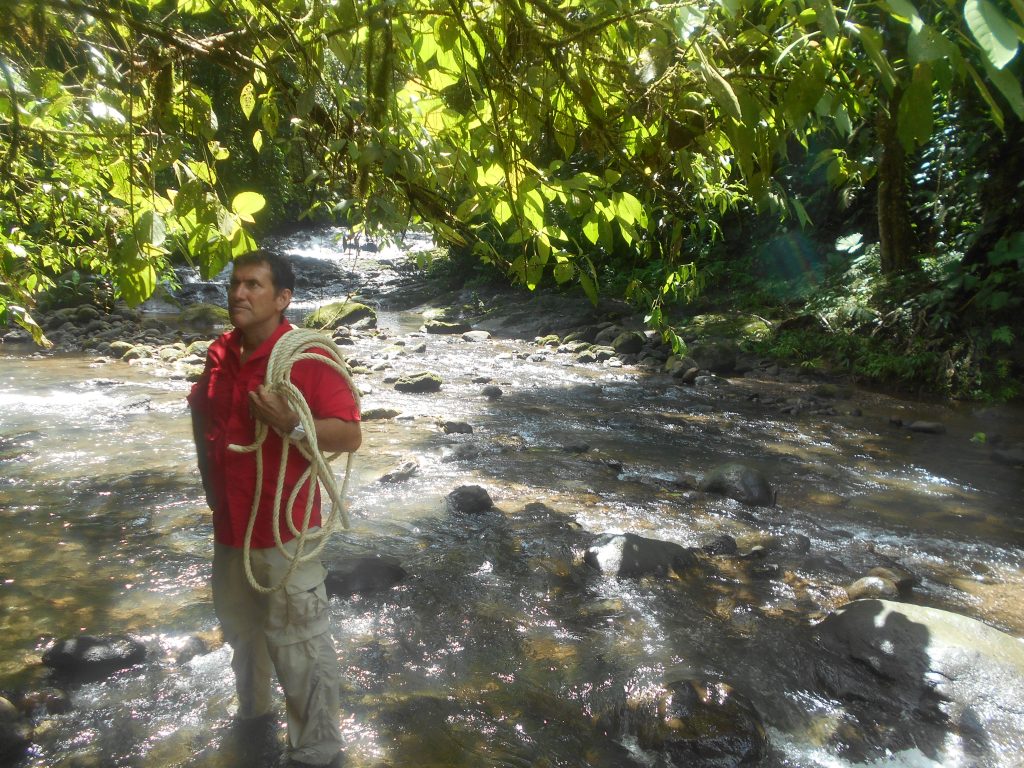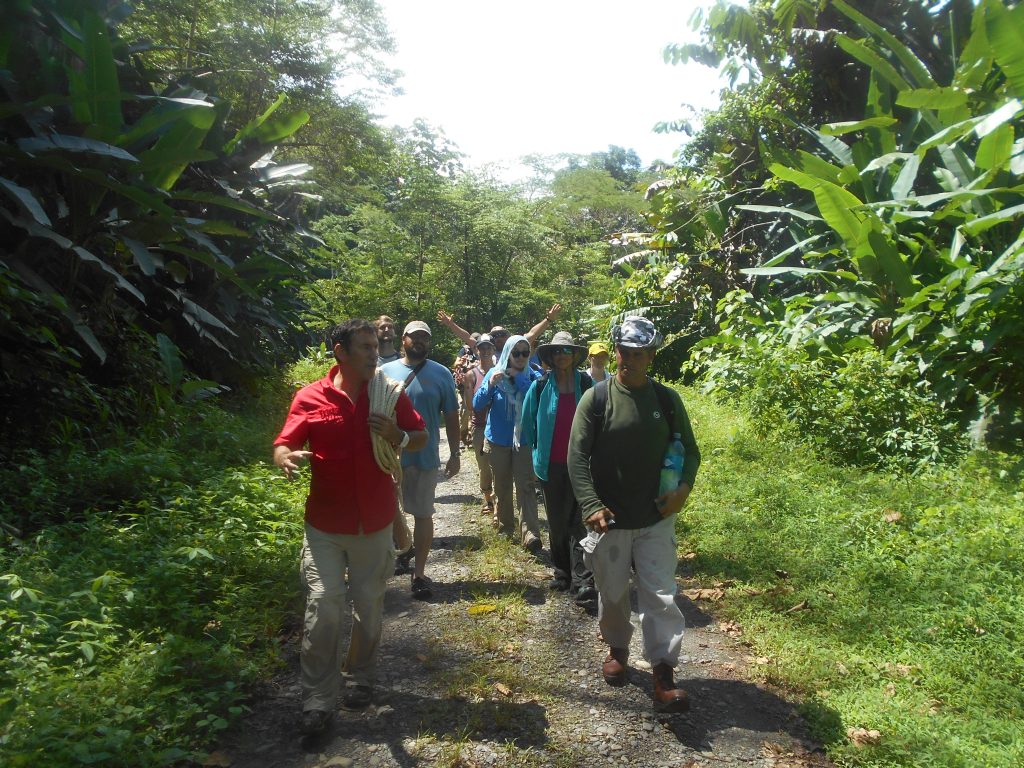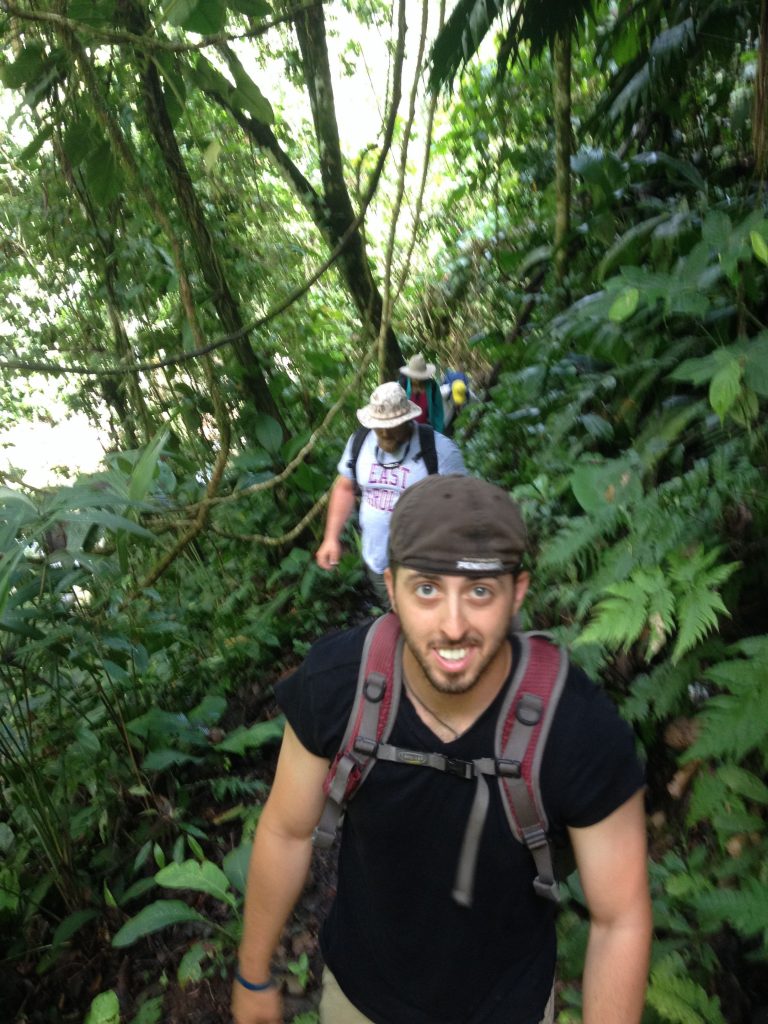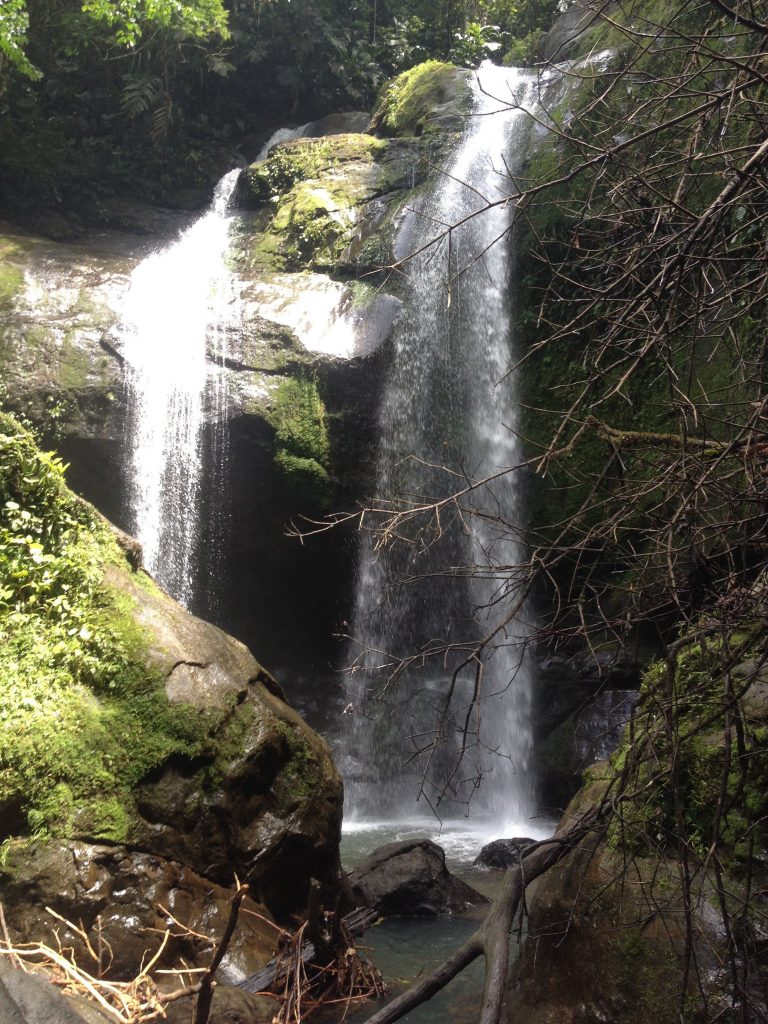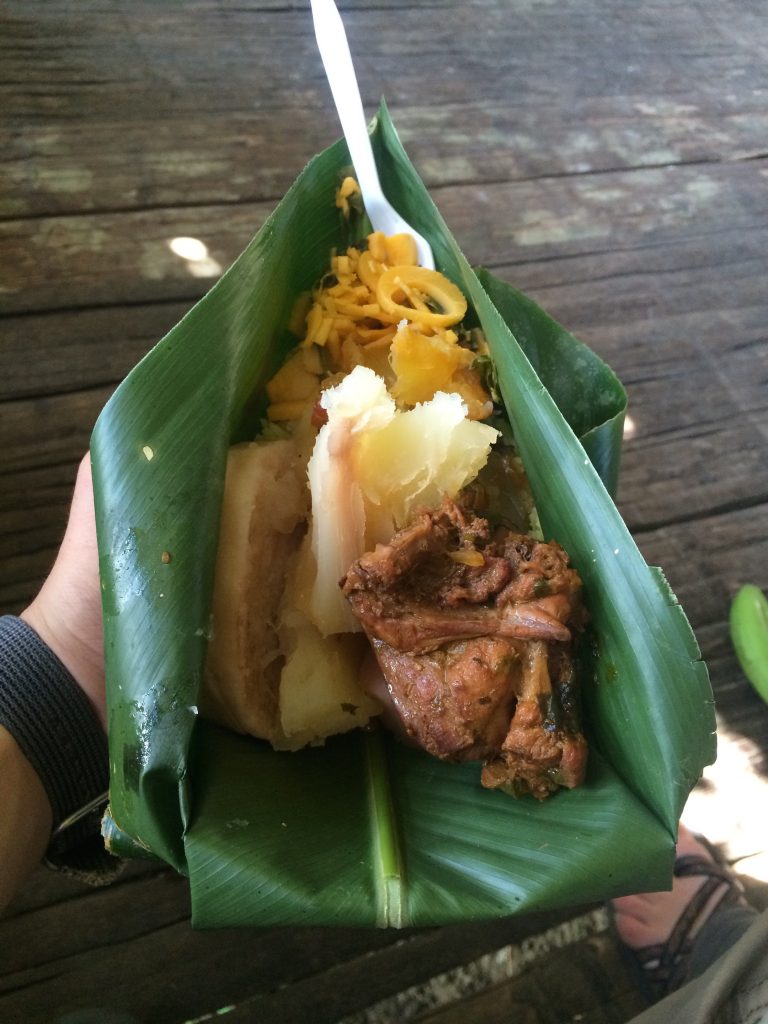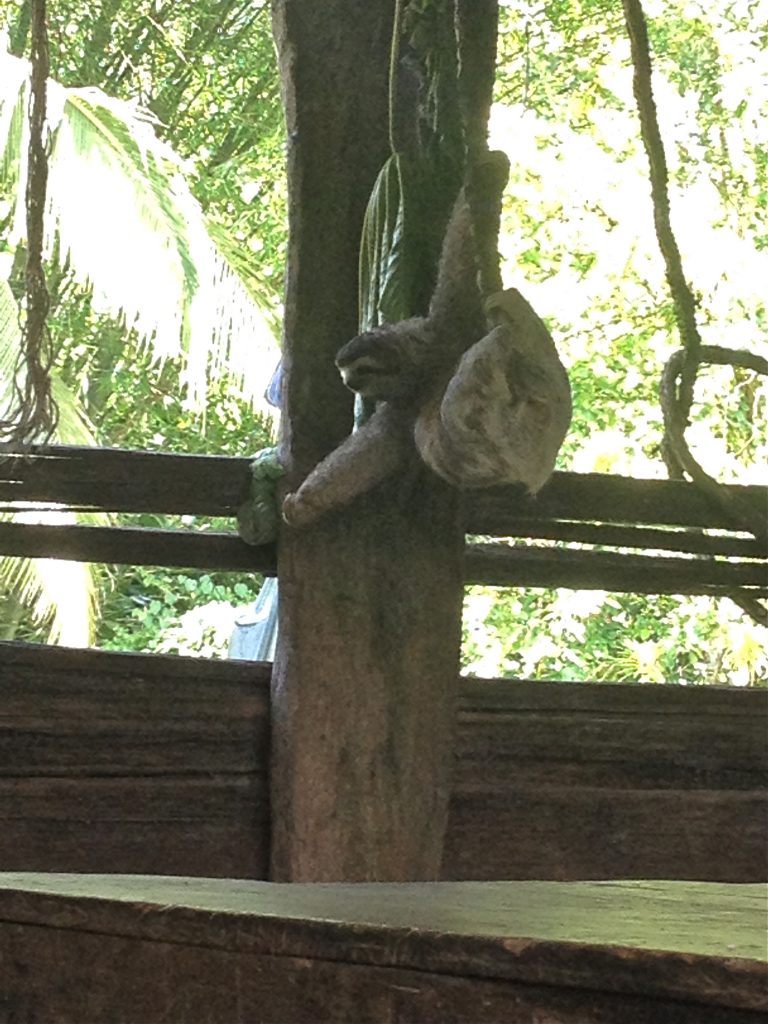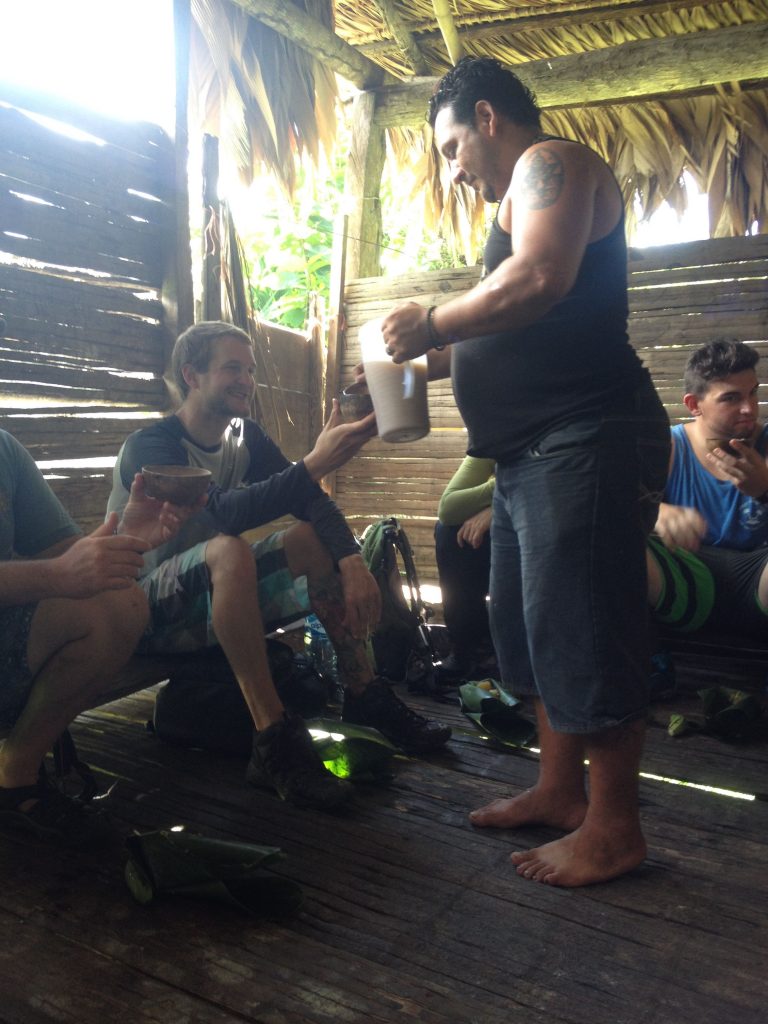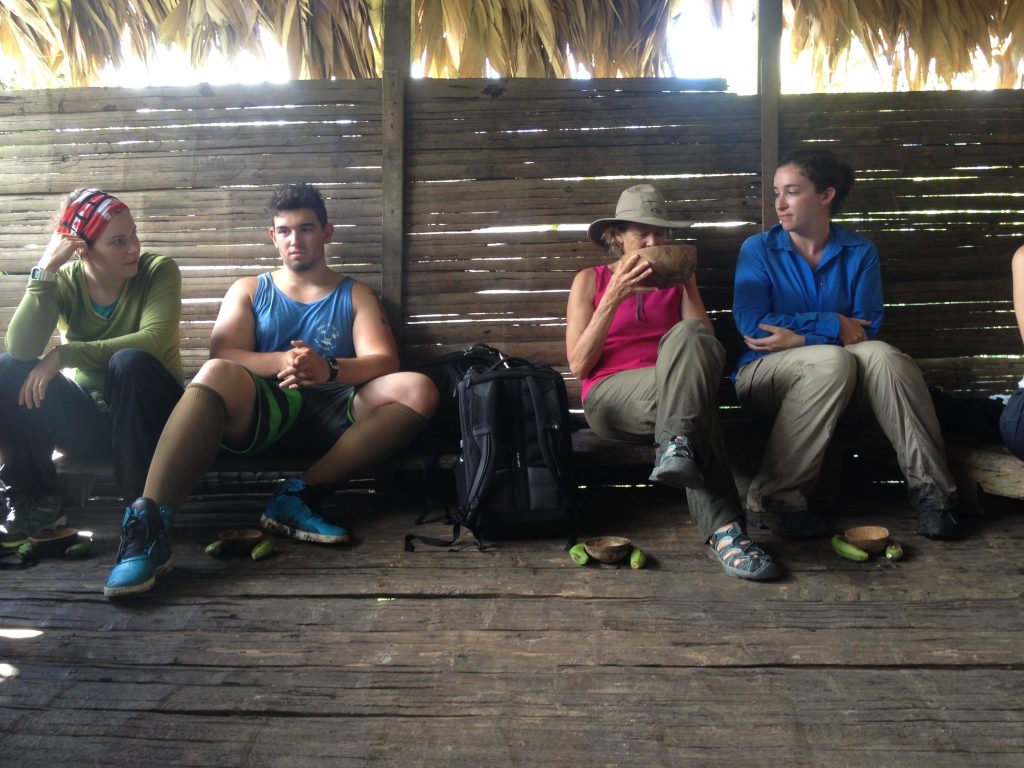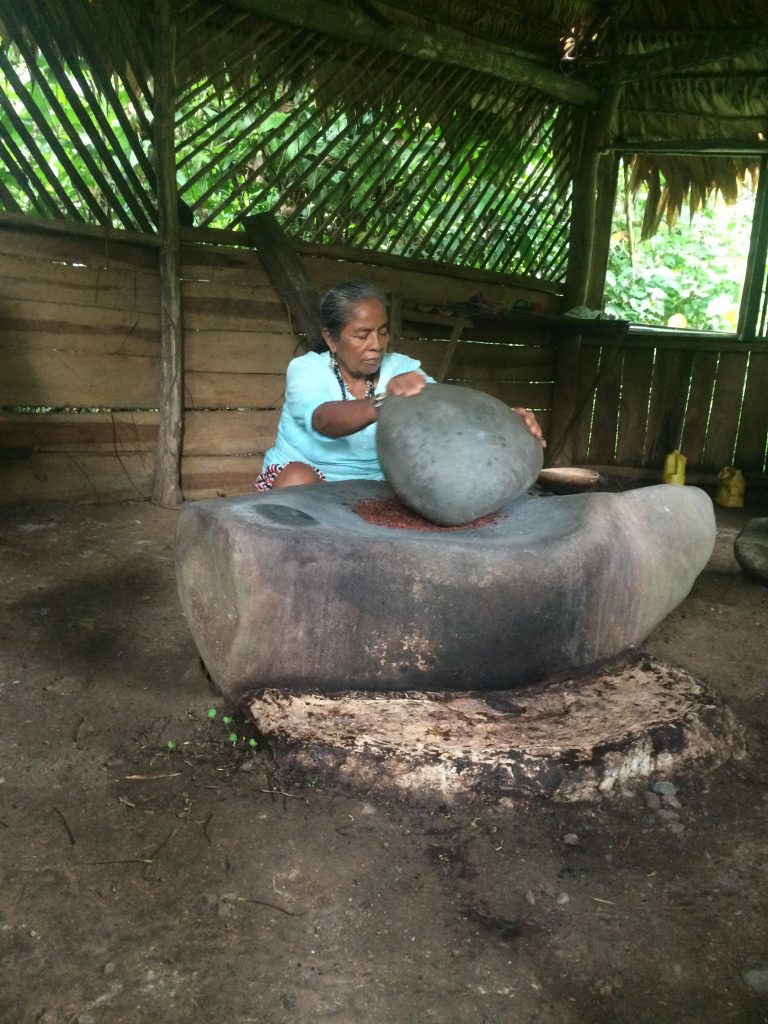On our day off, the team decided to visit the Bri Bri, an indigenous group in the Talamanca Mountains. Before I explain about Bri Bri, perhaps I should start at the beginning. Our day started at 8:30 in the morning when we found ourselves loading into a mini bus with our cheery driver Carlos. Jorge led the way in his car and we drove 30 minutes to Bri Bri town, stopping to look at iguanas along the way.
Once we reached the rainforest, we left Carlos with the van and made our way down the path. It wasn’t long before Jorge found some bullet ants, named appropriately for their ability to cause significant pain. He also showed us red tree frogs as we meandered through the ever-narrowing path. Once the path narrowed to single file, we knew we were in the primary rainforest section; there was no development here! The path was certainly precarious in some areas: muddy, steep, and right on the edge of the mountain, but we had our trusty leader to guide us along the way. The breathtaking waterfall that waited for us at the end was well worth the trek. We heard it first before actually laying eyes on it. Mist filled the air and settled on our skin: the whole scene was refreshing and peaceful: not another tourist in sight!
A few of our group hung back to swim at the base of the waterfall but the rest went higher up to swim in a smaller pool and jump from rocks into the water. The water was clear and cool and refreshing after our humid hike. We spent some time in the pool and then went back to fetch the group (slipping a bit on the rocks along the way). We made our way back to Carlos and our hike back was just as beautiful as the way in; I felt so at ease.
We were hungry by the time we returned and were excited to learn that our next stop was the greatly anticipated Bri Bri Village. There, we could eat a Bri Bri meal and learn about medicinal plants, cacoa, and Bri Bri culture.
The Bri Bri are an indigenous group that live in the Talamanca area in Costa Rica and their roots reach back to early Amazonian peoples who came to Costa Rica while hunting for turtles. Most of the Bri Bri live on reserves and support themselves with farming bananas, plantains, and most importantly, cacao. Some families supplement their income by inviting tourists to visit their homes and learn about their culture. This is exactly what we chose to do on our day off.
Perhaps the most alarming site when we first climbed the stairs of one of the Bri Bri stilted houses was the sloth hanging in the corner. Apparently, he showed up one day and decided to hang around for a while. We were greeted by smiling faces and Ana explained to us about Bri Bri culture and her family, who served us boiled vegetables and chicken in a folded banana leaf. The vegetables were a mix of yucca, plantains, and other tubers over rice. It was delicious! Our meal was accompanied by a sweet starfruit juice, perfect after all of our hiking. José-Luis, another member of the family, served us Chi-cha, a typed of fermented corn and pineapple drink. Too many of those and we’d be wobbling back to our minibus.
While we sat in a circle in the house, José-Luis told us about a number of medicinal plants found in the forest. He let us try a tree-bark tea that helps fight mosquitoes: the bitter tree bark had quinine in it, the same ingredient found in tonic water. It tasted much like a crushed Aspirin. After he finished explaining medicinal plants, José-Luis mashed some red berries in his fingers and gave us all a makeover. The men use the berries as warpaint and the women use it for lipstick.
With our newly made-up faces, we began to learn about chocolate production, one of the Bri Bri’s most important economical support systems. Chocolate comes from the cacao pod; the beans are encased in a sweet gooey fruit. We tried the fruit and then had a chance to roast the beans over a log fire, with the help of José-Luis’ grandmother and head of the house. Bri Bri women are the ones who prepare the cacao; this is deeply ingrained in their culture. The grandmother of the household showed us how to roast and then grind the beans. We used a large stone to mash the beans to a powder and then into a smoother consistency, capable of being rolled into smaller individuals chocolate balls. At this point, the raw chocolate was bitter and came as a surprise to our American taste buds.
After his grandmother was finished, José-Luis gave us all a chance to try various chocolate flavors that his family made: orange, coffee, pepper, coconut, peanut. They were all deliciously amazing. Each of us bought a few morsels to share with our families back home.
Before we left the welcoming family, we shared a ceremonial drink made of cacao, orange, and pepper. This drink (Theobroma cacao) is only prepared by the oldest female in the household and is used in rituals and ceremonies. We each stood in a circle and held up our gourd-like cups, repeating some of José-Luis’ Bri Bri words of well-wishing. As he lowered his cup, he told us we were now a part of his family; we were Bri Bri now. Perhaps the most striking part of the tour was José-Luis’ willingness to share his culture with us. He smiled and joked with us; his spirit was catching. I felt like I was at home and that I never wanted to leave. This is why some of us travel: to capture special moments with strangers who do not speak our language. When we travel, we expect to feel different from others but in fact, everyone smiles, cries, and loves. We are all, essentially, the same.
The students and professors at East Carolina University would like to thank Willie’s Tours, and especially Jorge, for planning this trip on such short notice. The entire day went smoothly and was absolutely perfect. Working hard requires that one plays hard, and we certainly had the perfect play day. If you are ever in the area, I highly suggest you book a Bri Bri tour with Willie’s. And tell Jorge we from ECU say hello!
-Melissa
